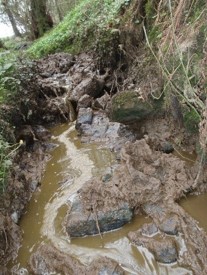Identifying and reporting signs of pollution
If you see any signs of river pollution, or an algal bloom, please record them as part of your survey and include photos where possible. The next few pages include a guide to some of the most common, easy-to-spot signs of pollution found in UK rivers and streams for you to use as reference when out in the field.
If you see any significant signs of pollution, please report it to the relevant statutory authority on their pollution hotline:
- If in Wales – call Natural Resources Wales – 0300 065 3000
- If you see a combined sewer overflow (CSO) discharging raw sewage, you can also report this to Dwr Cymru / Welsh Water (0800 085 3968) and the relevant regulator
Remember only ever look at or smell something you think might be a sign of water pollution – never touch it!
Common signs of river pollution to look out for
Sewage fungus
‘Sewage fungus’ is actually a mass of a particular type of filamentous bacteria, not a fungus. It grows in high nutrient environments, such as those around sewage discharges and is a sign of a medium to long-term contamination issue. It is usually grey-brown in appearance and can grow on almost any surface in a river channel.
Oily sheens
Many oily sheens found in rivers are formed as a result of naturally occurring iron oxidizing bacteria, and do not pose a threat to the environment. However, some oil sheens are formed as a result of petroleum entering the water and are toxic to wildlife and humans.
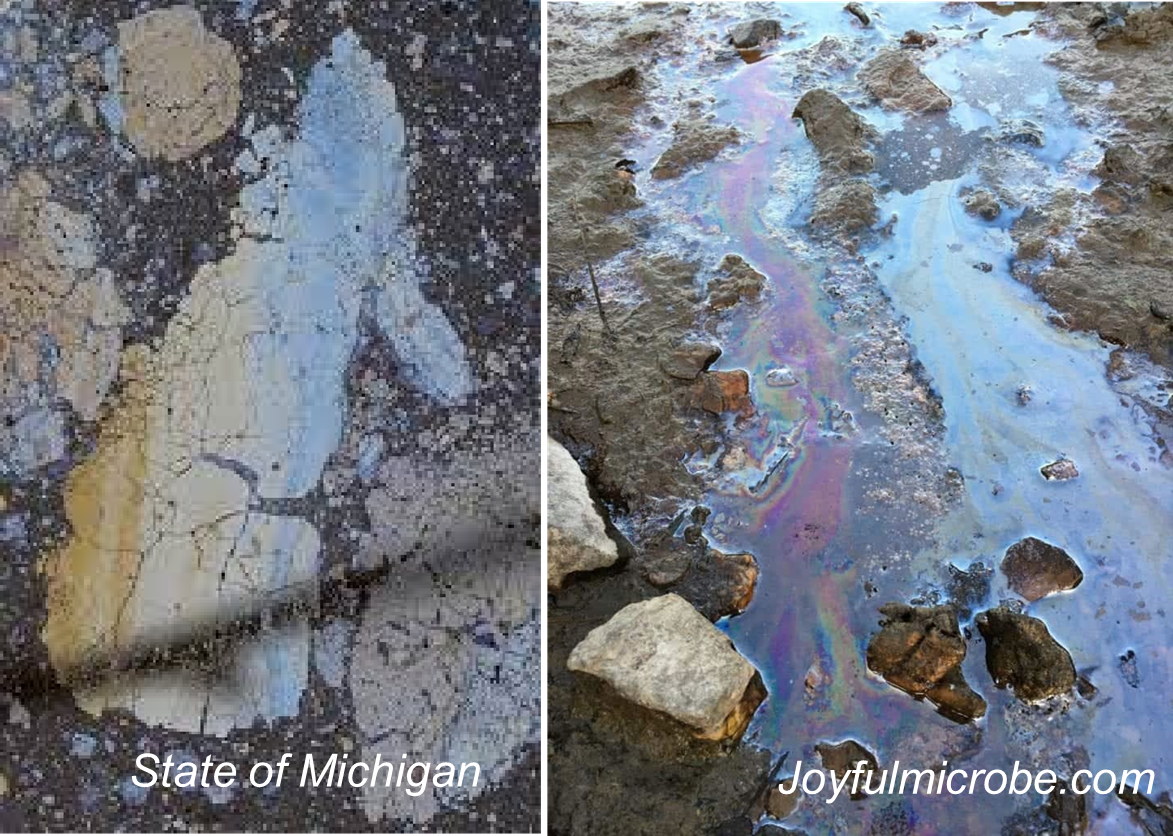 Bacterial oil sheen
Bacterial oil sheen
|
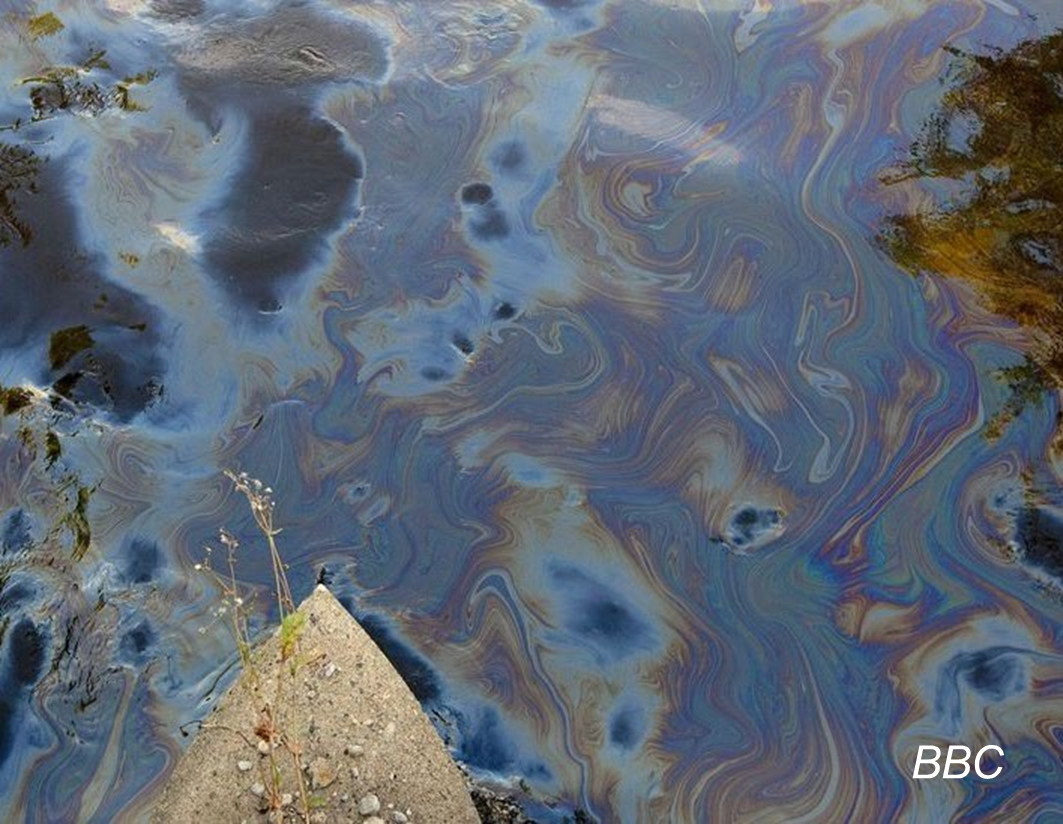 Petroleum oil sheen
Petroleum oil sheen
|
Foam
Foam found in rivers can be naturally occurring, forming due to the break-down of organic matter combined with increased flow or turbulence. However, foam can also be formed as a result of synthetic substances, such as detergents, entering the water. Foam from natural sources is usually light brown in colour, may smell earthy and is usually dispersed over a large area. It forms in places with high turbulence and collects in slow moving parts of the river. Foam from human sources is usually bright white in colour, may smell soapy and will usually accumulate near the source.
A quick and easy way to tell the difference between naturally occurring oil sheens and those that indicate pollution is to use a stick to poke, or - if you can’t reach - throw a small rock at, the oil sheen. If the sheen is bacterial – it will break into smaller bits when disturbed which will then stay separated. If the oil sheen is petroleum – it will swirl together when disturbed and quickly reform. Polluting sheens will also smell like petroleum, whereas bacterial sheens won’t.
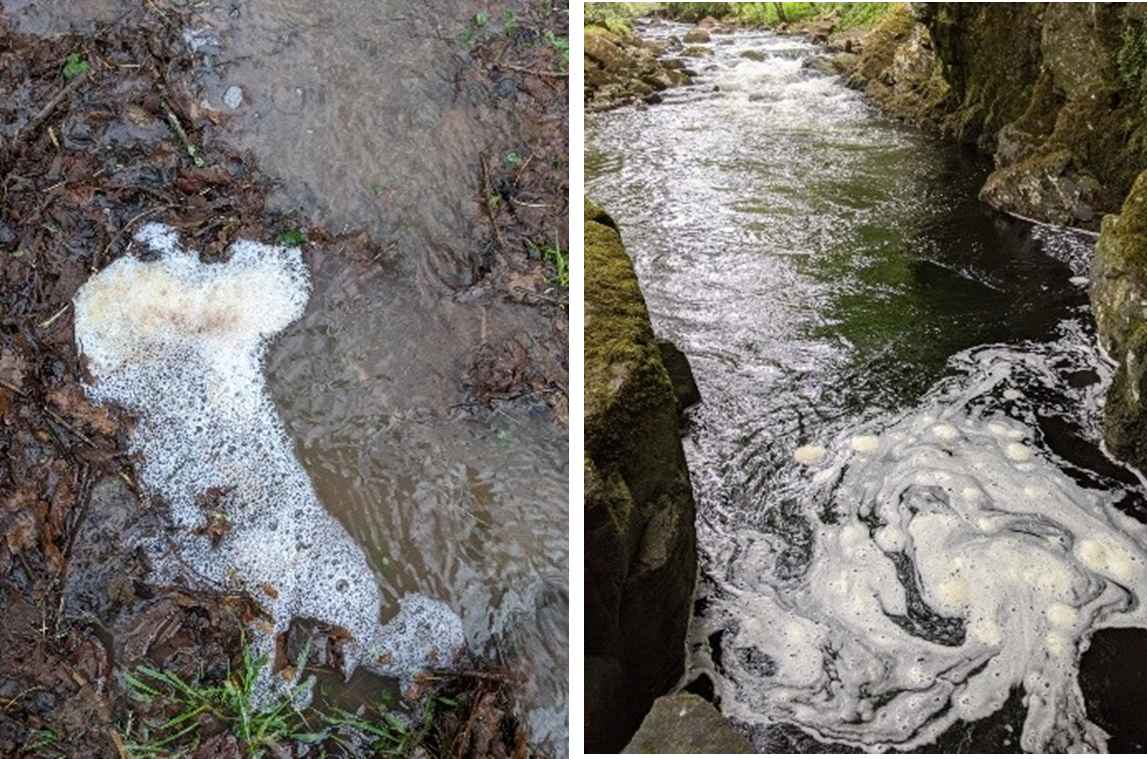 Natural foam
Natural foam
|
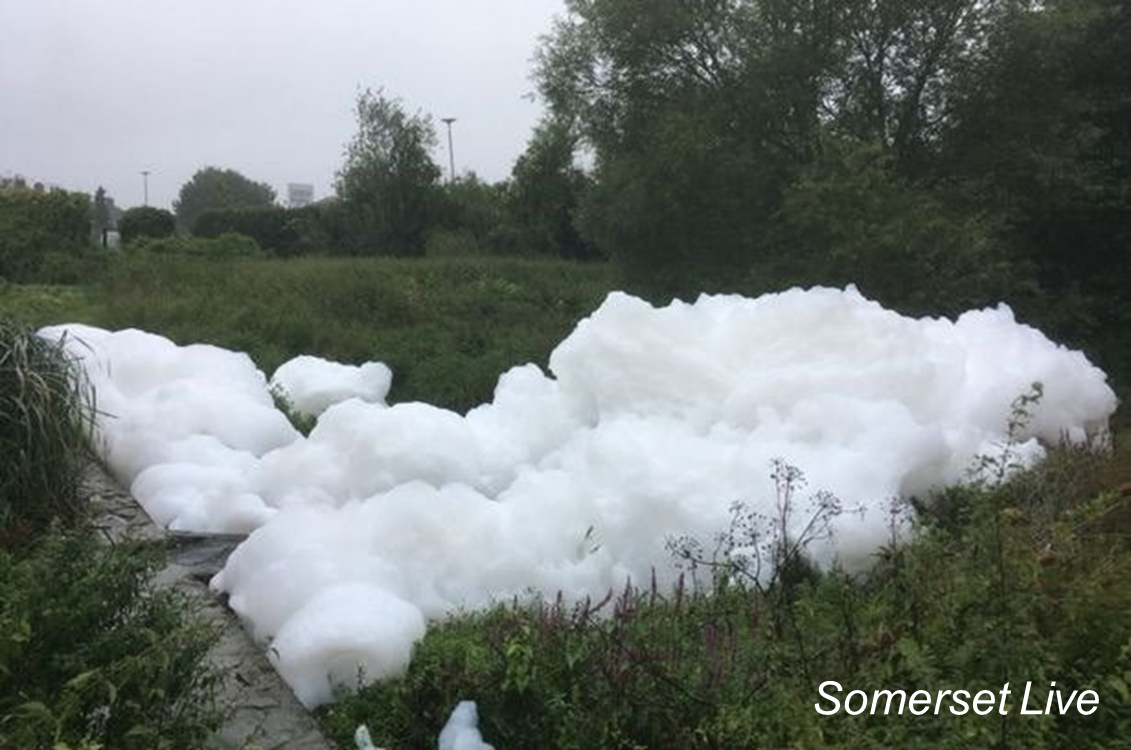 Synthetic foam
Synthetic foam
|
Sewage waste, odours and discolouration
Sewage related litter or waste – including cotton buds, sanitary products, nappies, wet wipes, dental floss, hair balls and more - are a strong indicator that sewage pollution has entered a river. This is likely to be the result of untreated sewage entering from a combined sewage overflow (CSO).
Chemical or detergent-like smells and grey water in rivers can also indicate sewage pollution. You can often track these signs of pollution to their source – a contaminated surface water drain entering the river. This is commonly seen in urban catchments suffering from residential plumbing misconnections, but can also indicate contamination from industrial sources or road run-off. If you smell something unnatural in the water, try and figure out what it smells like as this can often help detect the source of pollution (e.g. sewage, agricultural, urban or industrial).
Algal blooms
Algae describes a wide range of different photosynthetic organisms that live in water. When one type of microscopic algae or algae-like bacteria grows out of control, due to excess nutrients in the water, it causes an algal bloom. Algal blooms have the negative effect of reducing the amount of light able to penetrate through the water column and therefore the amount of oxygen in water. Some algal blooms also produce toxins harmful to both aquatic life and humans.
Cyanobacteria (a group of photosynthetic bacteria, also known as blue-green algae) are the most common culprit of toxic algal blooms in freshwaters. Not all cyanobacteria will produce toxins, but it’s impossible to tell just by looking at it whether or not it will. Cyanobacteria can only be seen when they clump together in blooms. It’s these sorts of algal bloom you need to look out for, but they can occur in different colours, shapes and sizes. The images below, provided with descriptions by the Centre for Ecology and Hydrology (CEH), should help you identify them but it can be tricky so please try and take a photo too. Duckweed and filamentous algae can also cover the water in ‘blooms’ but these are not harmful. They are often mistaken for cyanobacteria, so it’s good to know what they look like too.
CEH also suggest poking the scum with a stick to see whether it breaks into small particles or irregularly shaped lumps – if it does its likely cyanobacteria. If not, and you see tiny (2-4mm) leaves it’s probably duckweed, or if you see clumps of hairlike strands or soft tubes it’s probably filamentous algae. Take a lot at CEH’s Bloomin’ Algae app (free) or website for more photos, info and tips!
Cyanobacteria (blue-green algae) can appear as wisps or as a foam in water
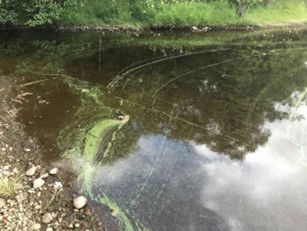 |
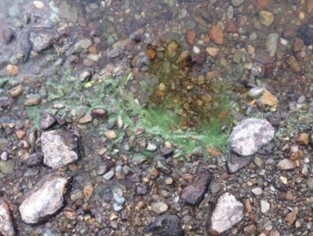 |
Blue-green algae can be a range of colours and sometimes appears lumpy
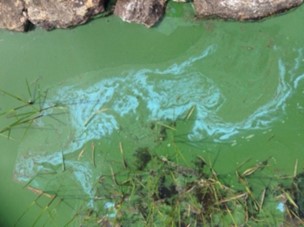 |
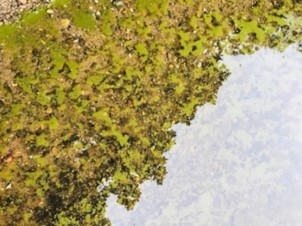 |
Blue-green algae can appear thick and paint-like or as a cloudy haze in water
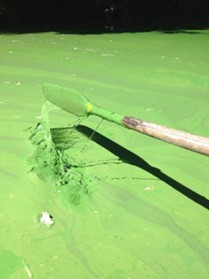 |
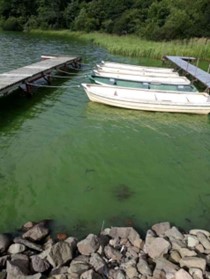 |
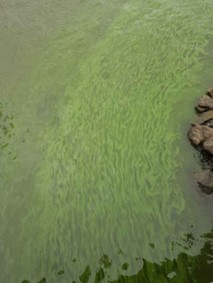 |
Duckweed (left) and filamentous algae (right) can look like blue-green algae
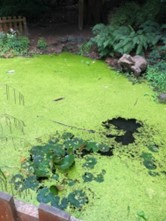 |
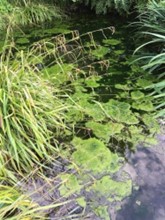 |
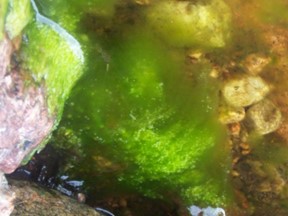 |
Other things to look out for…
Diffuse pollution entering rivers from agricultural land can often be difficult to spot. However, there are some common signs of poor land management to look out for across rural catchments that mean diffuse pollution is more likely to enter a river during heavy rainfall events. These signs include river bank ‘poaching’, done by farm animals as they access river water to drink, and fields left bare between cropping or due to overgrazing. Chemicals and nutrients applied to farmland enter the river during rainfall events via surface water run-off and can have a significant impact on water quality.
Slurry entering rivers as a result of leaks from slurry pits, or leachate draining from uncovered manure piles, can also be a serious form of pollution in agricultural areas. You may be able to spot slurry or leachate entering a river because it is usually a distinctly different colour (and smell) from the soil carried by surface run-off.
